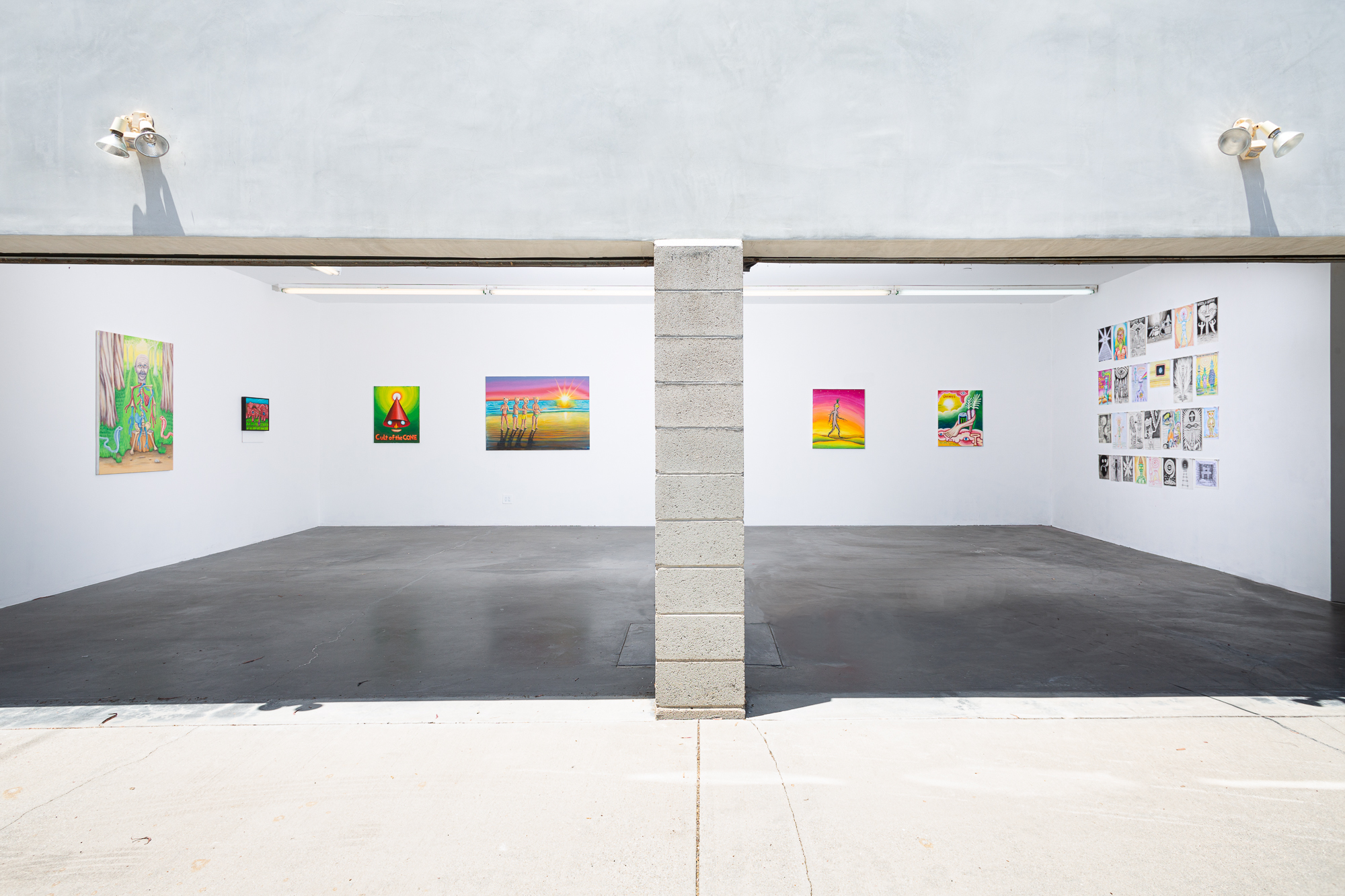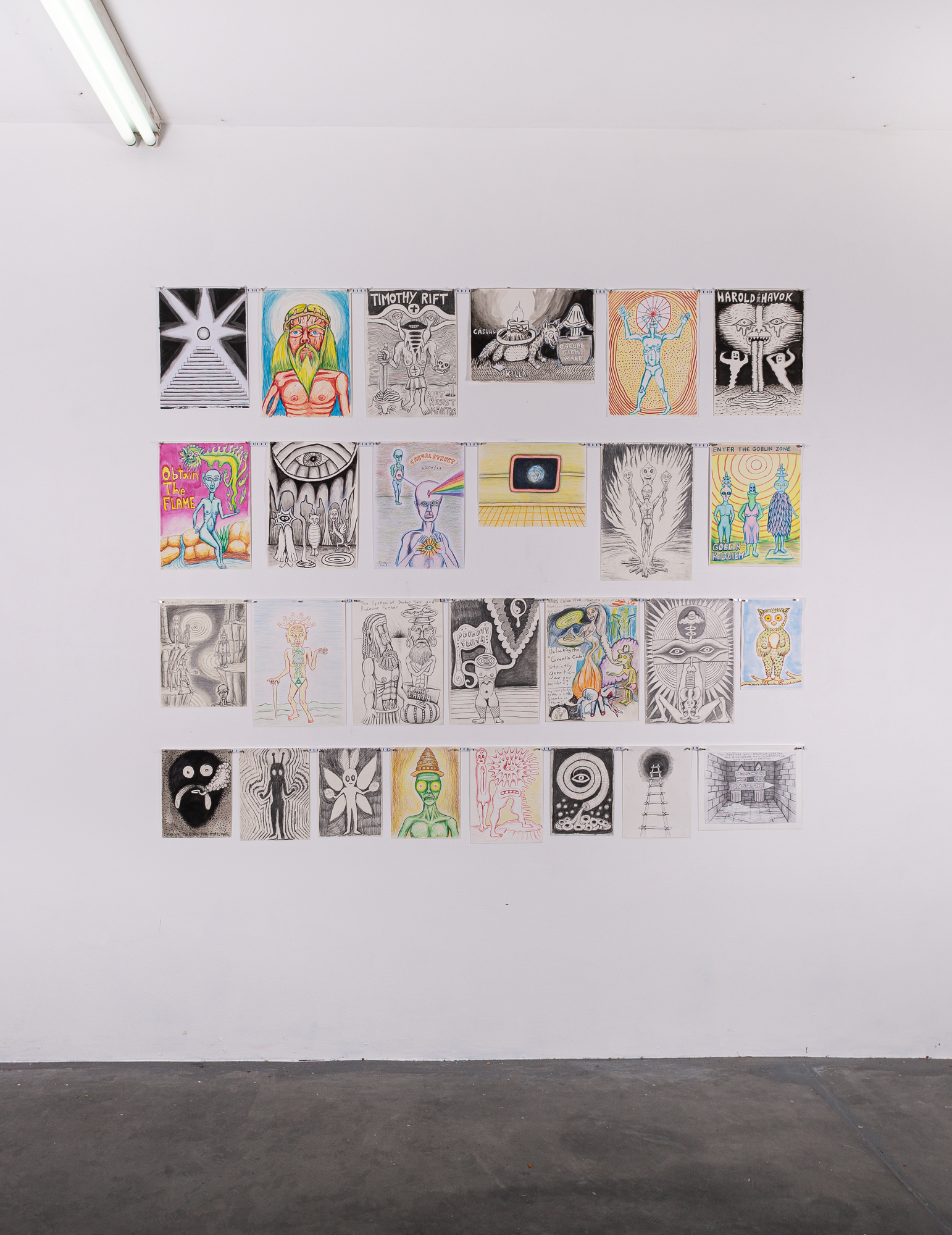Charles Irvin
The Mysterious World of Charles IrvinLos Angeles | May 23 - June 25 2020
Press: ARTFORUM

“Visitors - that’s a good term for them,
because they seem like visitors in our reality.”
because they seem like visitors in our reality.”

Six questions to know more about the Mysterious World of Charles Irvin
1. Can we please talk about your interest with ‘aliens’ ‘Extra-Terrestrials’ or as Native Americans refer to them, ‘Star People’?
I gravitate toward the theory that we have co-existed with non-human intelligent entities since the dawn of humankind. And I don’t mean just Dolphins and Porpoises. Look at the history our culture, mythology, and religion with an open mind. Consider that these stories are not just fantasy. They might point to something real (that is real in the sense that anything is real).
Yes, there’s always been the idea that some of these entities have come from the heavens, like the aforementioned “Star People” of Native Americans.
That’s plausible, but I don’t think these entities are all the same beings from the same place in space/time as we understand it. When you study this phenomena quickly you realize it challenges all our paradigms. That is why I find it incredibly fascinating.
I don’t think aliens is a useful term for this describing them, but the word sticks because it has some playful vibration. Just try to say “aliens’ in this context without smiling! Why do you think Giorgio Tsoukalos (Ancient Aliens host) is always wearing a huge smile?
“I’ve also encountered them while I was on entheogens.”
Author and experiencer Whitley Strieber calls them visitors. That’s a good term because to us they are visitors to our reality. That said I think our reality is slowly expanding to accommodate them. We might call them co-inhabitants one day.
Some people are going to read this and think “Charles believes in aliens”. That implies that I’ve adopted this idea to satisfy some emotional need or something. As always the truth is much more complex than that. I’ve also encountered them while I was on entheogens.
2. How long have you been painting them ? Where and when did the fascination begin ?
As a kid I was into mythology, science fiction, the paranormal, monsters, etc. I was born in 1971 so the science fiction and paranormal crazes of the late 70s profoundly influenced me. I remember my parents debating whether I could watch this late 70s show - ‘Project UFO’. I was also voracious reader of all the aforementioned genres and topics. All the above topics offer glimpses into other realms - something that always interested me. I drew all the time as a kid so all that inspired my art, especially fantasy and sci fi illustration. When I got to high school I discovered surrealism, psychedelia, expressionism, Bosch.
3. How do you receive information from them?
I don’t think I receive info from them the way a channeler does. I’m just an artist in the tradition of someone like William Blake. He was inspired equally by his culture (The Bible, Dante, etc.) and his visions. Of course his culture influenced his visions. You can’t separate one from the other. His visions passed through the filter of his cultural conditioning.
I work from my imagination. I’m depicting what’s in my minds eye, third eye, glimpses of the astral planes, other dimensions - who knows? I don’t concern myself too much with the language around it. Whatever I say, the words won’t touch the truth of the matter. Also I don’t want to give out some tidy explanation that frames everyone’s perception of the art work.
4. Can you tell me about some of the specific characters you paint?
I just paint the most compelling images that pop into my field of consciousness. I don’t know why they are mostly humanoid, and yes I do think of them as characters. But they are essentially images, not characters in a literary sense. Sometimes I do enjoy giving them back stories. I also like to think of them as deities in an animistic sense.
5. And what about the cosmic traffic light paintings, as I like to call them?
What you’re referring to is a recent series of paintings of what I’ll call organisms. The back story is that I saw this image while I was meditating. You could call it a symbol. Then my mind had to label it, so it said “UFO”. Once I sketched it became more UFO-like - I put it hovering over a southwestern US landscape. Then I painted it just set against a field of stars. Next I did different versions exploring abstraction and representation.
I made the image vertical, and it seemed less like a craft and more like an organism.
There’s many reports of UFOs that behave like sentient beings, so I started thinking of them as organisms. Organism is better-more ambiguous.
5. Please can we also talk about kundalini yoga which I believe you do everyday? How many years have you been doing it and what does it do to you, that shifts you ?
I do a Kundalini yoga set every morning. I took my first class around 2003. From the beginning I could tell it was something special. I didn’t start a daily practice until 2010 though. Once I did that my life changed. Then I did teacher training and that was even more profound. It helped me get my shit together and shed habits that were not serving me. It helped me release anger and anxiety. It has helped me make hard life decisions and stay centered during stressful times. It has made me more intuitive and therefore a better artist.
6. How was art school for you? Did you have any Influential teachers that shifted your perspective? Did they say or do anything memorable ?
Art school was ok. I went to a high school for the performing and visual arts in Dallas. That was cool since I met other freaks there. It helped me survive late adolescence.Then I went to undergrad at University of TX at Austin. It’s a huge school so the art dept, very impersonal. At the time I didn’t mind because I was under the delusion that I was a mature artist. I studied with Peter Saul there, but he wasn’t invested at all in teaching. It actually hindered me because I tried to paint like him. It took me years to shake that bad habit.
I went to Grad at the School of the Art Institute of Chicago. It was the same as undergrad - big, impersonal. Also more conservative than I expected. I had this one advisor who was cool, but gave me all this Lacanian theory to read. I couldn’t relate. I think the more I forget my art school conditioning the more I enjoy making art.











